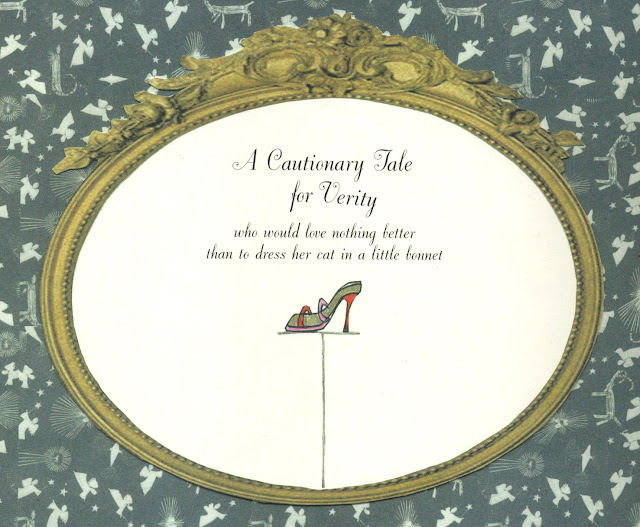 |
| Who Wants to be a Poodle - Lauren Child |
Animal characters in children’s books have long been wearing clothes, but some appear to a have a passion for fashion unbounded.

Fabulous Frankie - Simon James Green and Garry Parsons
Having recently illustrated a book where the central character has a penchant for fabulous attire, I have been taking a closer look at what the animal characters on my bookshelf are currently wearing and revisiting some old favourites whose clothing style still remains striking.

Rupert The Bear - The Daily Express
Stories where animals appear wearing humans’ clothes preoccupy most of my bookshelf, as they seem to do in most children’s bookshops. This anthropomorphism is everywhere in our lives and has a long history in literature.
 |
| Illustration from the Panchatantra |
Preceding Aesop’s Fables by centuries, personification is a well-established literary device from ancient times such as in the Panchatantra from India, in which anthropomorphized animals illustrate principles of life.

The Wolf and the Crane - Aesop
Many of the animal stereotypes we are familiar with today originate from these texts and have an influence on what we read today and the roles animal characters take on in our stories but these weren’t aimed directly at children in the same way we recognise animal characters in picture books today.
Before the mid-eighteenth century, the notion of childhood, as we know it now, did not exist. Children were dressed in adult clothes and their natural playful curiosities were largely ignored, at least in literature, where illustrated material for children was virtually non-existent. Later, as the middle class developed and views about children changed, adults began catering to their emotional needs, and animals with human characteristics began to appear in children’s books.
In The Dreadful Story of Harriet and the Matches, Harriet ignores the warnings from the two cats not to play with matches which results in her catching fire and being burned to ashes, just leaving a pair of shoes. The cats in the illustrations are not yet wearing clothes but do use handkerchiefs to dry their tears at Harriet’s demise.
In The Story of the Wild Huntsman, the hare steals the hunter's gun and spectacles and turns the gun on him until he falls down the well outside his house.
Looking at these illustrations now, we can be forgiven for having a nostalgic view of them because of their attire but the clothing that Potter’s characters are made to wear are mainly for them to look socially acceptable for the time, rather than the characters themselves having a desire for fashion.
However, The story of Barbar, the little elephant by Jean De Brunhoff, first published in France in 1931 (English edition 1934), tells the story of an elephant who discovers an attraction to tailored suits and fine footwear. The first story of Barbar depicts his life as a young elephant who is tragically orphaned by a miserable hunter right at the beginning of the book. The distraught Barbar flees from the hunter and finds himself in a wealthy provincial town where his mind is taken off his tragedy by his admiration of the clothes of the people who live there.
Everyone in the town appears to share an enthusiasm for fashion including an old lady who helps Barbar out with a place to stay and some spending money. Barbar purchases himself a smart green suit, a lovely bowler hat, shoes and spats. How wonderfully smart he looks!
Barbar’s cousins, Arthur and Celeste, find him in the city and help encourage him to return to the ‘Great Forest’ where, with his new found knowledge from the city, he becomes the new Elephant King and marries his cousin Celeste in stylish wedding clothes picked out by a dromedary with an uncanny eye for high fashion.
The attention to stylish clothing perhaps reflects the fact that the original publisher of the books was Editions du Jardin des Modes, a French language women's fashion magazine published monthly in France between 1922 and 1997 and owned by Condé-Nast. The Babar books were the first Condé-Nast publications not specifically about fashion.
In contrast to Barbar, Mr. Tiger, in Mr Tiger Goes Wild by Peter Brown, feels dissatisfied with his formal dress and discovers that he feels more himself in a quadruped stance than the adopted bipedalism of city life. His friends lose patience with him and he leaves the city to reclaim his wildness. When he returns later, he discovers other folk in his community are also feeling the urge to be themselves and abandoning their need for clothing.
Clothing plays an important role in the narratives of many picture books - Walter & the No-Need-To-Worry Suit by Rachel Bright, Slug Needs A Hug from Jeanne Willis and Tony Ross and the Goat’s Coat by Tom Percival and Christine Pym to name a few, but clothing also gives the illustrator a chance to deepen the character they are depicting through what they are wearing, or not wearing, as is the case for Kes Gray’s streaking Nuddy Ned.
Curious to find out why Sarah McIntyre’s Grumpycorn wears a purple roll neck sweater, she told me…
As I mentioned at the beginning, I have recently been illustrating the story of a character who’s desire is stand out from the crowd and the only way he is sure he can do that is by being fabulous. But for a flamingo in a lagoon full of fabulous flamingos, standing out from the crowd is not an easy task, even when your wearing a sequin cloak inspired by Kansai Yamamoto!
***
Thank you to Sarah McIntyre for answering my question about Grumpycorn. Sarah is a best selling writer and illustrator. See more of her work here. @jabberworks
Garry Parsons is an illustrator of many children's books. @ICanDrawDinos
For more picture book passion for fashion, Fabulous Frankie by Simon James Green and illustrated by Garry Parsons publishes 1st June from Scholastic.

















No comments:
Post a Comment